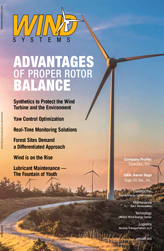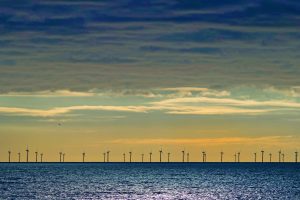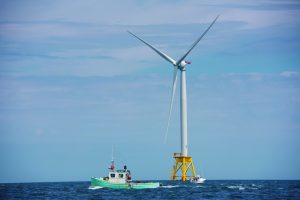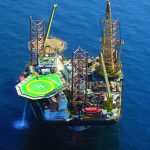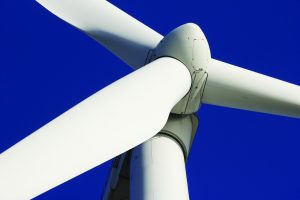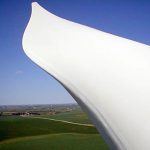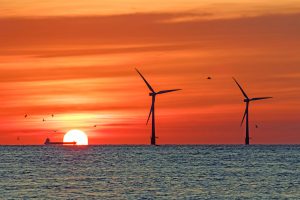As offshore wind energy projects move farther offshore into deeper waters, erecting wind turbines on floating platforms instead of the traditional fixed-bottom platforms become more economical. Floating platforms have been used with success in the offshore oil industry, but there are a number of engineering challenges associated with offshore floating wind turbines (OFWTs). One important challenge is understanding the ultimate and fatigue loads that drive the lifetime of OFWTs. Specifically, it is critical to properly define the external metocean conditions that determine the loading on an OFWT.
The design of conventional fixed-bottom offshore wind turbines is governed by a set of design standards. A commonly used set of standards is one developed by the International Electrotechnical Commission (IEC). A critical component of the IEC standards is the definition of a loads analysis procedure for ensuring the reliable and safe operation of offshore wind turbines. This loads analysis procedure entails simulating a wind turbine design using an aero-elastic code under a number of simulation conditions, or Design Load Cases (DLCs). Design standards for offshore wind turbines include the definition of a number of DLCs, as well as methods for aggregating the simulation results to estimate ultimate and fatigue life for the critical components of the offshore wind turbine.
The DLCs are dependent upon a definition of the metocean conditions at the site where the turbines will be located. Metocean conditions are the combinations of wind, wave, and current conditions that an offshore wind turbine is expected to experience during its lifetime. Metocean conditions are typically compiled for a site as a set of conditional probabilities for various important parameters. As an example, for a given wind speed range, or bin, from 7-9 m/s, the probability of a range of values of significant wave heights must be defined. By finding the distribution of significant wave height for all possible wind speed bins, a two-dimensional histogram can be assembled that can indicate the probability of any combination of wind speed and significant wave height. The utility in defining the metocean conditions in this manner is that it allows the results of the DLC simulations to be appropriately weighted by the probability of that particular condition occurring. Thus, while certain combinations of wind and wave conditions may result in large fatigue loads, if the probability of those conditions occurring is extremely low, the overall contribution to the lifetime fatigue will be low.
Floating turbines complicate this already complex process of defining metocean conditions and performing a loads analysis procedure. In fact, a loads analysis procedure currently does not exist for OFWTs. To address this gap, Gordon Stewart (a PhD student at UMass Amherst) and I, in partnership with researchers at NREL, the University of Stuttgart, and Penn State University, are working to develop a loads analysis procedure for floating wind turbines that can be used in the design standards.
One of the first challenges addressed in this project was the need to define metocean conditions in a loads analysis procedure for a floating turbine. Data from the National Oceanographic and Atmospheric Administration’s (NOAA) network of floating data buoys was collected from 30 ocean sites off both coasts of the United States as well as from the Gulf of Mexico. After post-processing these data to remove missing entries and scale the wind speeds up to the height of a wind turbine using a wind shear law, conditional probabilities for the metocean conditions were created for each site. The four metocean parameters that are needed for an OFWT are the wind speed, the wave height, the dominant wave period, and the angle between the wind direction and the wave direction. The conditional probability functions were chosen based on the physical interactions between the wind and the waves; the wind and wave misalignment is conditioned on only wind speed, the wave height is conditioned on wind speed and wind/wave misalignment, and the wave period is conditioned on wind speed and wave height. Once this database of conditional probabilities across the country was established, sites with similar properties were averaged together to create three sites that are representative of the actual ocean sites in the U.S. Three generic sites representing the East Coast, the West Coast, and the Gulf of Mexico were created. These generic databases of conditional probabilities are extremely useful, as they allow for the fatigue and ultimate loads from a given metocean condition to be properly weighted by the probability that the condition will occur.
The next step in this project will be to simulate the floating turbine for every possible operational condition. The probabilities of each operational condition occurring can then be found from the conditional probability databases for the three representative sites, and by combining the loads from each condition with the probability of occurrence, the fatigue loading on a turbine can be accessed.
















